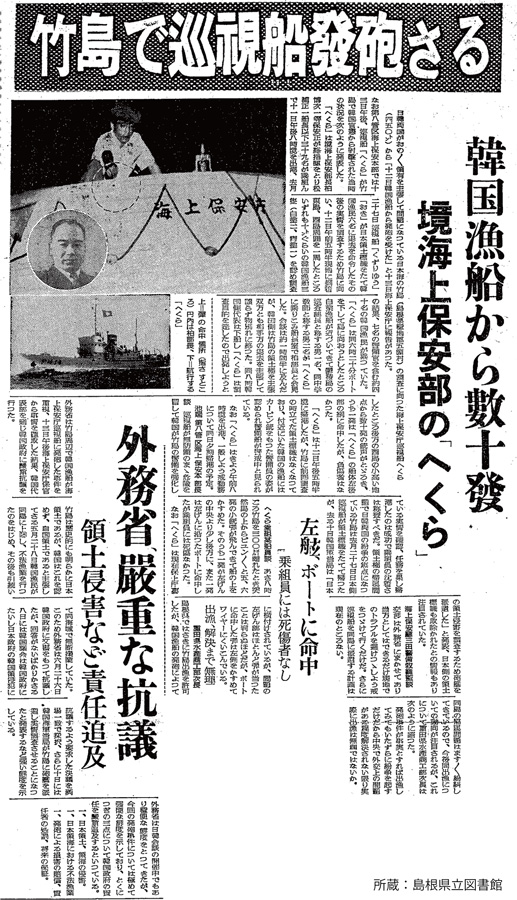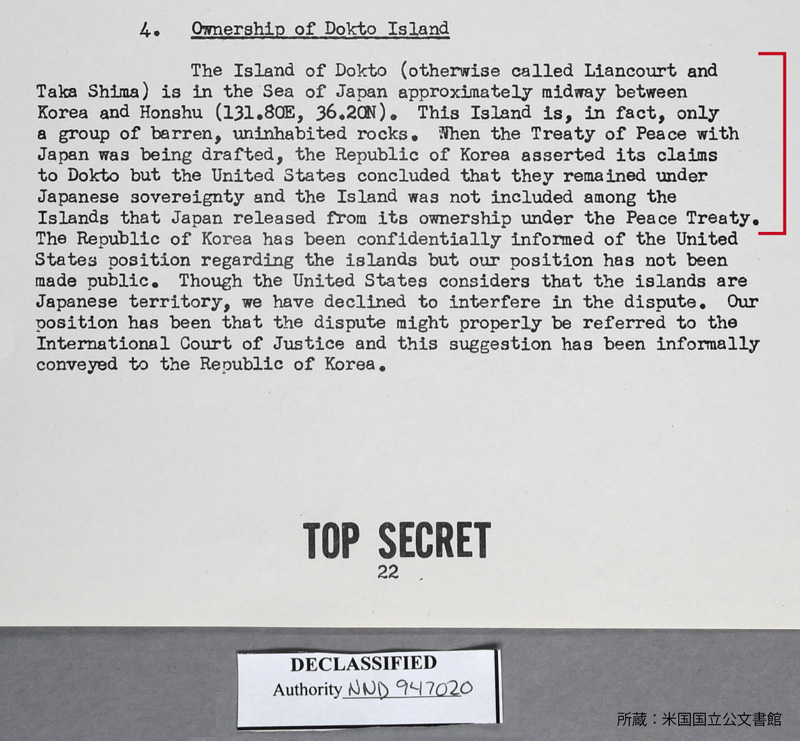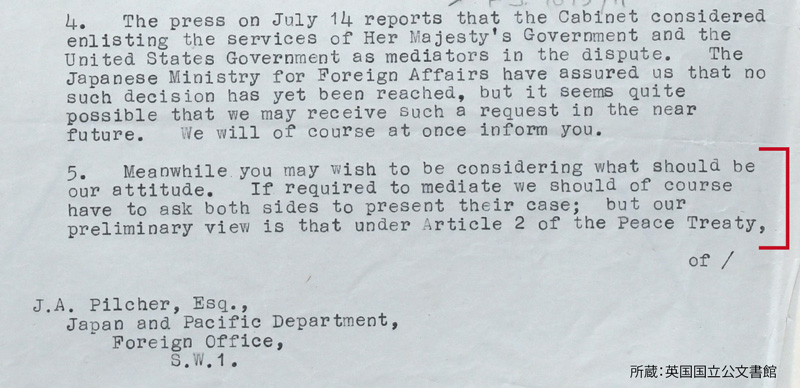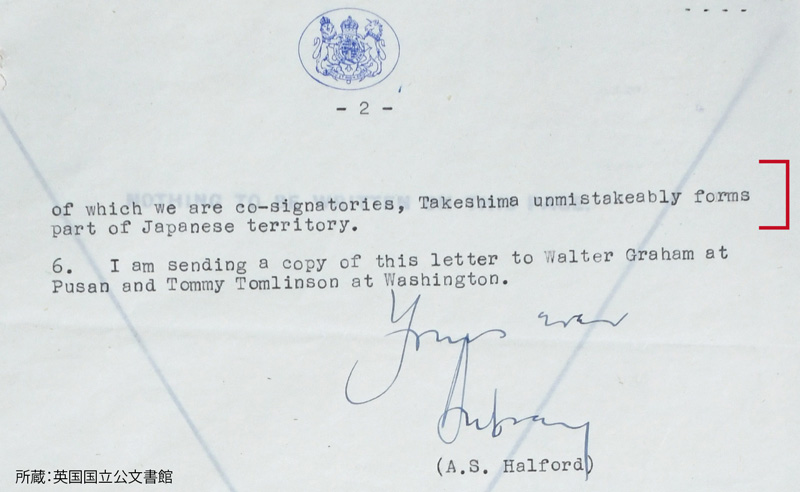Entry into force of the Peace Treaty
Illegal Occupation by the ROK
April 28, 1952
Entry into force of the San Francisco Peace Treaty
Japan restored its independence along with the termination of instructions and measures by the GHP/ SCAP including SCAPIN 677. Later, Takeshima was designated as a bombing range for the US Forces.
- July 26, 1952Designation of Takeshima as a bombing range for the US Forces. (Passage to Takeshima was not allowed.)
- March 19, 1953Release of Takeshima from the above designation
Developments in Japan
June 1953 –
Passage to Takeshima resumes
Upon the release of Takeshima from the designation of a bombing range, Shimane Prefecture permitted fisheries around Takeshima, and fishing operations started in waters surrounding Takeshima. Meanwhile, as illegal landings by ROK nationals frequently occurred, the Japanese authorities began taking enforcement measures.
Implementation of a Joint Investigation
From June 22 to 28, 1953, the 8th Regional Maritime Safety Headquarters (current Regional Coast Guard Office) implemented a crackdown on illegal passage and fishing, found six ROK nationals on Takeshima, questioned them, warned them that Takeshima belonged to Japan and their activities were regarded as illegal entry and fishing, and demanded that they leave the island. However, they did not have any powered vessel at the time, and were made to promise to return by the next available ship.
Photos of Joint Investigation by Shimane Prefecture and the Japan Coast Guard

June 27, 1953 (Showa 28)
[Repository] Shimane Prefecture Takeshima Reference Room
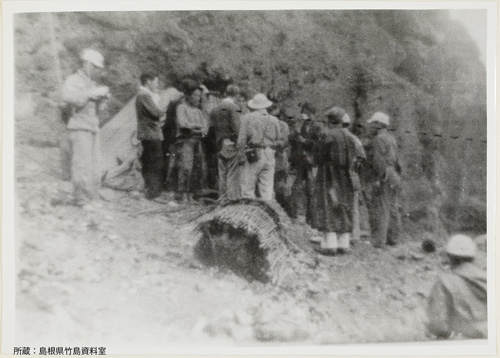
ROK nationals being questioned on Takeshima
July 1953 –
Incident in which shots were fired against Patrol Vessel Hekura of the Japan Coast Guard
On July 12, 1953, dozens of shots were fired at Patrol Vessel Hekura of the Sakai Coast Guard, the 8th Regional Coast Guard Office.
Exchanges of notes verbale
between Japan and the ROK
On the day following the incident in which the Japan Coast Guard Patrol Vessel Hekura was fired upon, Japan lodged a protest against the ROK. Exchanges of notes verbales begun, conveying each side’s grounds for its territorial claims to the other. Both Japan and the ROK argued that Takeshima was its own territory based on historical facts and international law.
Main exchanges of notes verbale (views)
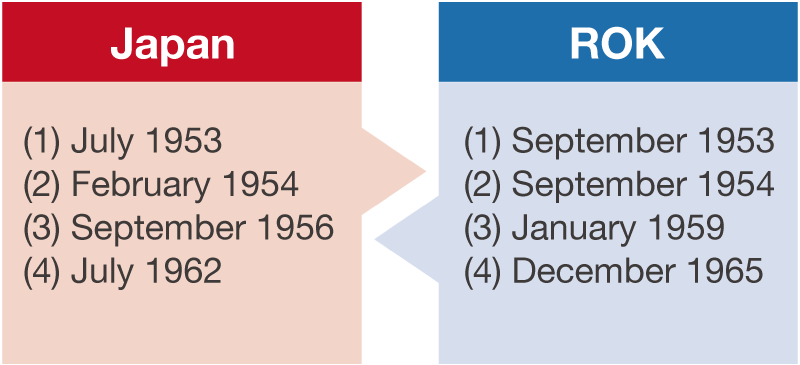
View of the US / UK
View of the US
In the process of drafting the San Francisco Peace Treaty, the US concluded that in spite of the ROK’s requests, Takeshima remained under Japanese sovereignty and was not included among the islands that Japan released from its ownership. The US position was that the dispute might properly be referred to the International Court of Justice, and this suggestion was informally conveyed to the ROK.
Report of the Van Fleet Mission to the Far East
Outline
Presidential Ambassador James Van Fleet visited Asian countries from April to July, 1954 (Showa 29) for a study mission. On October 4, he submitted his report to President Eisenhower, including reports on the military status of each country and recommendations for US policy.
View of the UK
It was reported to the Foreign Office in the capital that “our [Embassy’s] … view is that under Article 2 of the Peace Treaty, …Takeshima unmistakeably forms part of Japanese territory.”
Cable sent from the British Embassy in Japan to the Foreign Office
Outline
On July 14, 1953, two days after the incident in which a Japanese patrol vessel “Hekura” was fired upon by the ROK side, Foreign Minister Okazaki stated in a cabinet meeting that he would request both the UK and the US governments to take a mediator’s role to resolve the Takeshima dispute. In response, the British Embassy in Tokyo sent this cable to the Foreign Office regarding the Takeshima dispute.
| Takeshima - Top |

